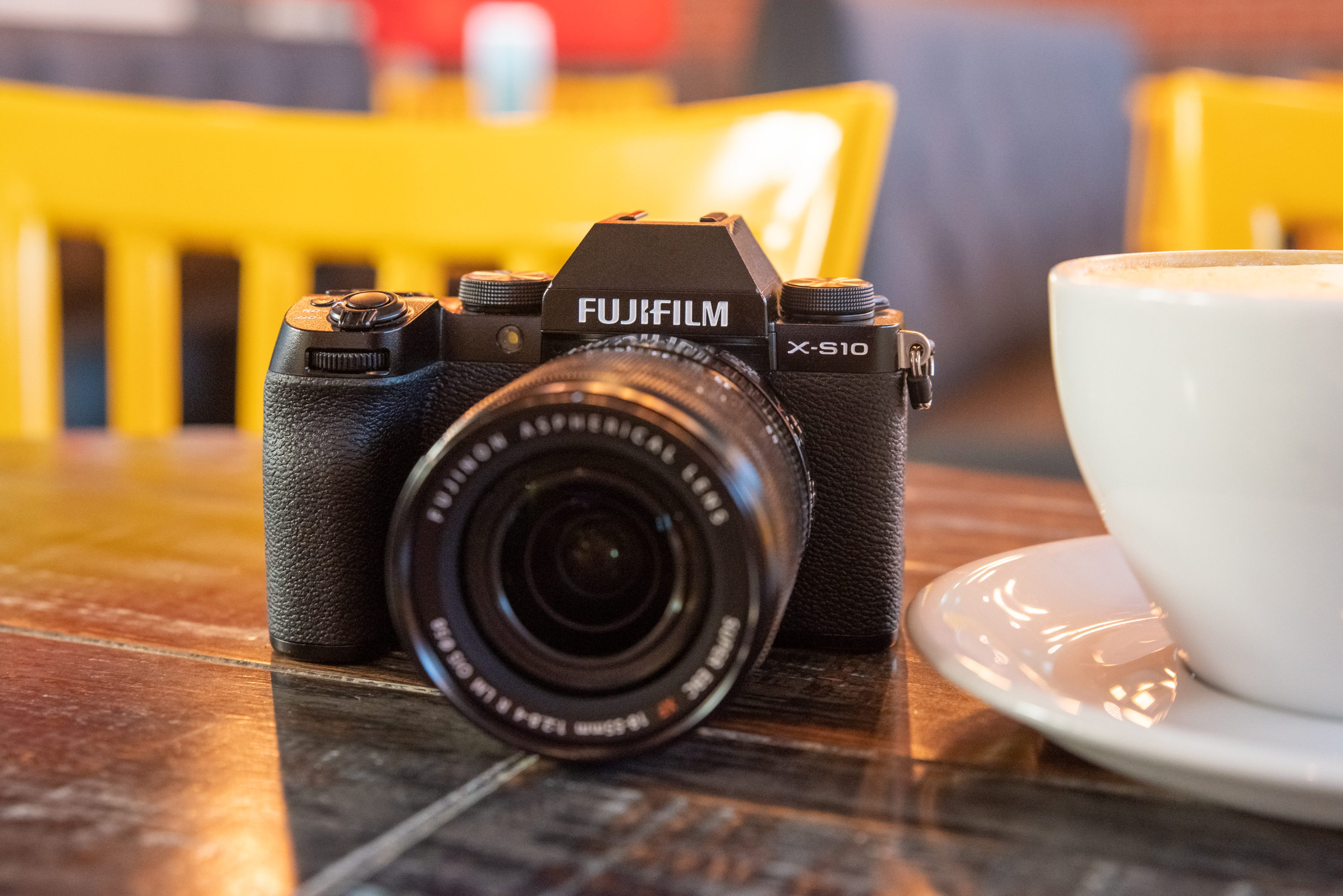Last Updated on 08/17/2023 by Chris Gampat
Fujifilm has gone from strength to strength over the last few years. Photographers who appreciate stunning design have flocked to the platform for the gorgeous retro-inspired cameras and the great images that X-Trans sensors can help produce. However, newer photographers are put off by the vintage-style controls. Enter the Fujifilm XS10. Fujifilm adopted a new design philosophy for the XS10 so that those who aren’t comfortable using so many manual controls can have a camera they can call their own. On paper, the Fujifilm XS10 sounds impressive. It has the same 26 Megapixel sensor found in the bigger X-T4, and it even has IBIS. How does it perform out in the wild, though? Find out in our full review.
Table of Contents
Pros and Cons
Pros
- The XS10 is a perfect balance of form and function
- Superb image quality, even at ISOs up to 6400
- Very effective IBIS
- The tilty/flippy screen is great
- Very nicely priced at $999
Cons
- No weather sealing
- Only one UHS-I card slot. It’s time to ditch this old standard
- Battery life is mediocre at best
- Max shutter speed is 1/4000
- Some pretty big issues with tracking subjects
Gear Used
We used the Fujifilm XS10 with the Fujifilm 50mm F1.0 and the Fujifilm 16-80mm f4.
Technical Specifications
All of the tech specs for the Fujfiilm XS10 were provided by Fujifilm:
- All magnesium alloy construction
- 5-axis IBIS provides up to 6 stops
- IBIS unit is 30% smaller and lighter than the IBIS in X-T4
- 2.36 million dot EVF with 100fps refresh rate
- Same autofocus system as the X-T4
- 8fps mechanical – up to 30fps with the electronic shutter
- 4 custom settings on the mode dial
- Fully articulating screen with 1.08 million dot LCD
- Same X-Trans sensor (26mp) and processor as X-T4
- The control set has been simplified to attract a new customer base
- 4K 4:2:2: 10-Bit external
- 30 min record time at 4K30
- 240 FPS mode in video
- RAW capture in auto mode
- New auto film simulation will apply either Provia, Velvia, or Astia based on the scene
- Controllable focus points in auto mode
- Foolproof video capture button that will record straight into video program mode
“Fujifilm cameras have a unique look, and despite the company’s simpler design language, the camera still looks the part.”
Brett Day – Gear Editor
Fujifilm XS10 – Ergonomics
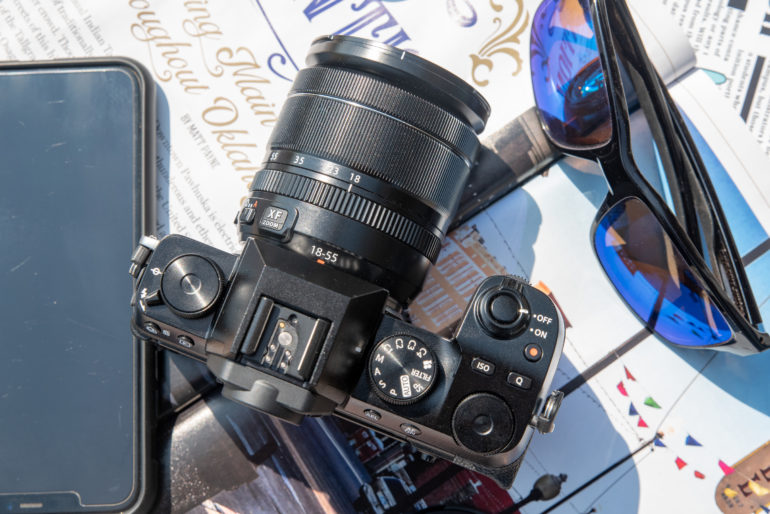
Just look at that grip!! Seriously, this is the first feature you will see when opening the Fujifilm XS10’s box, and it will fill you with glee. For too long, smaller cameras have had tiny grips that make them very uncomfortable to hold. This is especially true for people with large hands. As soon as I picked up the Fujifilm XS10, it felt like it belonged in my hand. The camera feels secure when held, and there’s enough room for all five fingers to fit on the grip. That’s right, no more pinky dangling. Nicely done, Fujifilm.
While Fujifilm has kept the same vintage aesthetic, you can see that the controls have been thinned out and simplified. In the image above, you can see a control wheel on the top left. This selects film simulations and filters. At the base of this dial is a lever to pop up the built-in flash. To the right of the EVF, you can see the main mode dial. There’s an on-off switch, a dedicated ISO button, and a Q button, which brings up the quick menu. You’ll also see the shutter dial towards the back of the camera and a dedicated record button. The design is simple yet elegant.
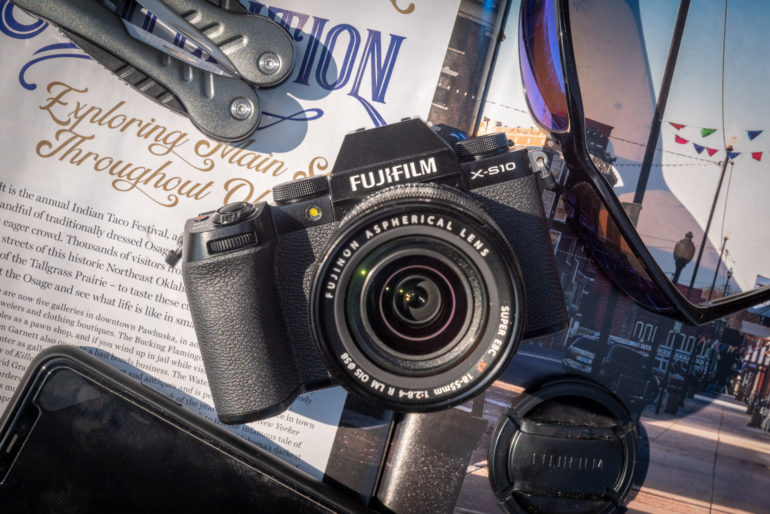
The XS10 looks every bit a Fujifilm camera. Fujifilm cameras have a unique look, and despite the company’s simpler design language, the camera still looks the part. The whole front of the camera is nicely textured. The aperture control wheel is placed nicely at the top of the grip. The only other control on the front of the camera is the lens release button.
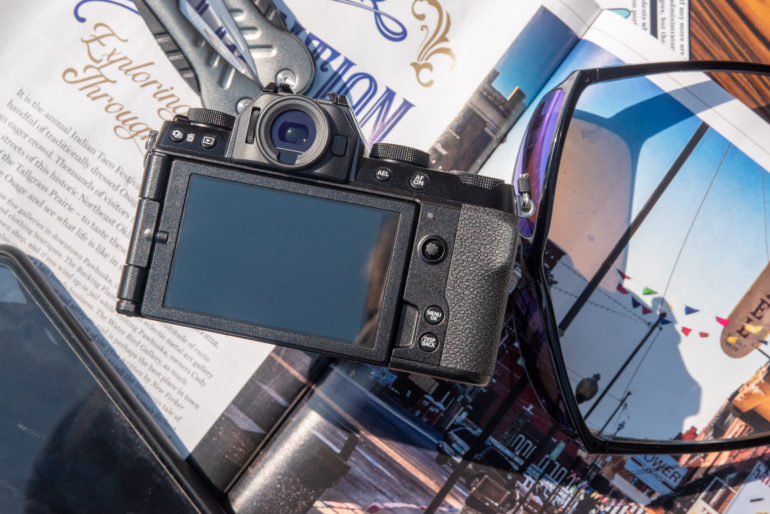
To the left of the EVF, you’re going to find the shooting modes button and a playback button. To the right of the EVF is a custom function button. This control is followed by an AEL button and the control for AF ON. To the right of the 3-inch LCD, you’ll find just three controls: a joystick, a menu/OK button, and a display/back button. The small thumb rest is well-positioned and helps with overall comfort. The right side of the camera is blank. The camera’s left side houses one flap that hides a USB-C port and a mini HDMI connector. There’s a headphone jack that sits up out of the way of the articulating screen, while the SD card goes in the battery compartment on the bottom. Overall, the Fujifilm XS10 is a well-designed camera that’s comfortable to hold and use for extended periods.
“We feel like you could drive fence posts into the ground with it; just don’t do it in the rain.”
Brett Day – Gear Editor
Fujifilm XS10 – Build Quality
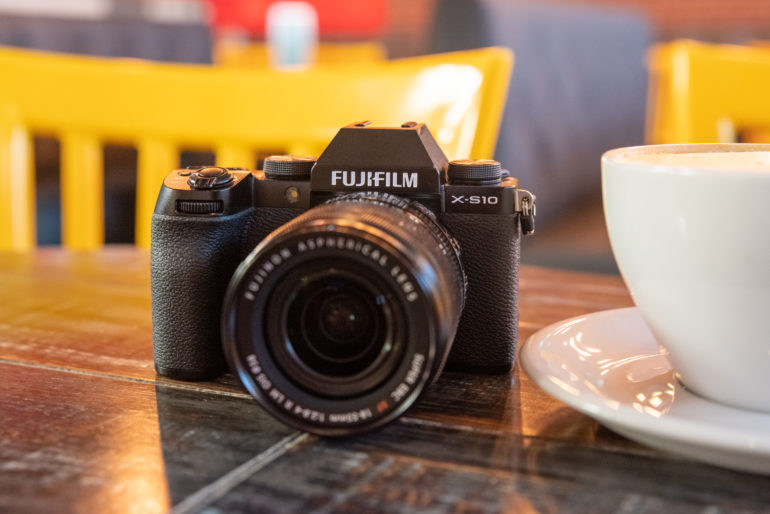
The Fujifilm XS10 feels like a solid mid-range camera. This, in part, is due to Fujifilm taking some build cues from the X-H1. The body of the camera is made from magnesium alloy. This means the camera should survive the rigors of daily use with ease. The buttons and controls provide excellent positive feedback when pushed or turned. During my time with the Fujifilm XS10, I have never worried once about the camera’s durability.
However, there’s some bad news. The biggest disappointment in terms of build quality is the lack of weather sealing. Apparently, sealing was left out to keep the size of the camera down. We were also told it’s because with sealing, 4K30 30 minute record limits probably wouldn’t have been reached. We don’t buy that. The Fujifilm X-S10 is basically a mini XT4 with a few features stripped out. So, we assume weather sealing has been left out to artificially create a gap between the Fujifilm XS10 and the XT4. The lack of weather sealing aside, the Fujifilm XS10 is probably the most well built mid-range cameras you can get your hands on today. We feel like you could drive fence posts into the ground with it; just don’t do it in the rain.
“When it comes to shooting in low light conditions, the IBIS will help you out a great deal as you’ll be able to keep your ISO lower thanks to more usable slow shutter speeds.”
Brett Day – Gear Editor
Fujifilm XS10 – Ease Of Use
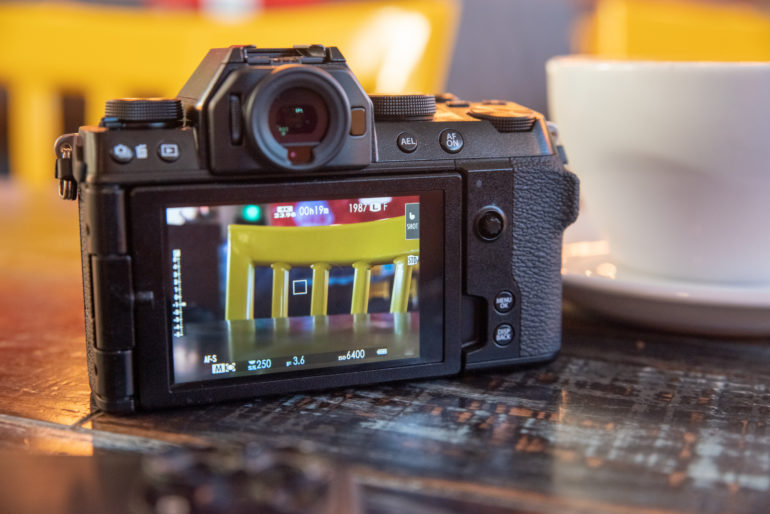
A new design philosophy has been adopted for the Fujifilm XS10. Fujifilm wants to attract customers who aren’t accustomed to film-era control dials. This new design may not be liked by longtime Fujifilm camera users. Still, this is a camera that’s not designed for them. However, the layout works very well. I have found that the Fujifilm XS10 is easy to pick up and use. The small number of physical controls won’t overwhelm newcomers, which is the point with this camera.
One strange decision, though, is the lack of touch functionality. If you’re going to remove the dials, why not put the touchscreen to work? We know Fujifilm has a friendly touch interface available. They use it in the X-T200. So, the decision not to use that very friendly interface in the X-S10 is puzzling. Let’s be clear here, though. There is still touch functionality. The touchscreen can be used in the same way that the touchscreen can be used in the X-T4 and many other Fujifilm cameras. We were hoping that Fujifilm would use this new camera as a platform to drive innovation when it comes to the honestly, now tired-looking user interface. It’s not bad overall, but it’s time to add a bit more shine to it.
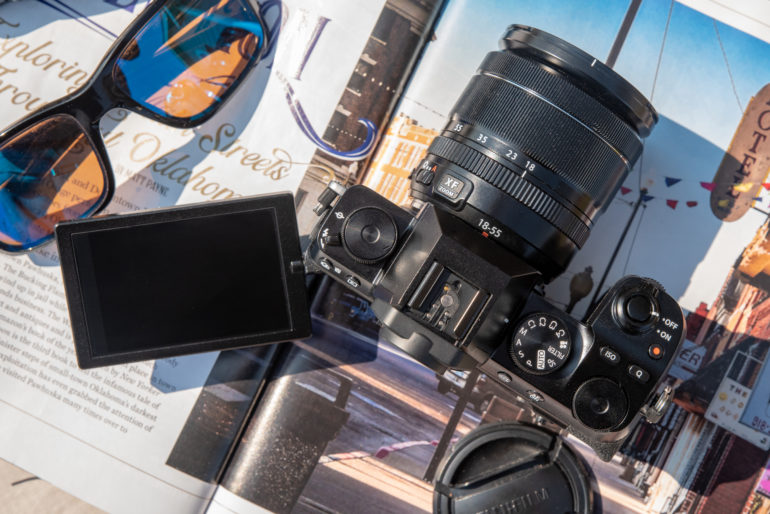
The EVF is a 2.36 million dot affair. This is a step down from the EVF in the X-T4. Still, it looks nice and is a pleasure to use. The LCD is 3-inches in size and has a resolution of 1.08 million dots. The fully articulating screen makes getting shots low down or from high above easy. Many think articulating screens are for videographers. However, their versatility makes getting shots easier for photographers too.
You’ll find 18 film simulations and 13 filters, which make the camera fun to use. If you want to stay away from having to edit your photos, you’ll love the film sims. They are easy to use, too, thanks to a dedicated dial on the camera’s top left. In the battery compartment, there is space for just one SD card slot (UHS-I). Because of the UHS-I card, you’ll find that the buffer fills much quicker than it should. What’s the point of giving this camera such great burst rates if the buffer can’t handle them?
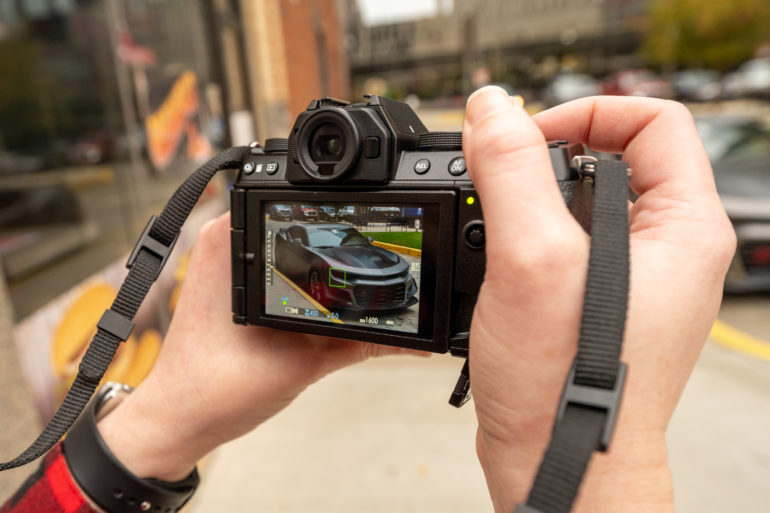
The 5-axis IBIS impressive in the XS10 as well. One second handheld exposures are not a problem. When it comes to shooting in low light conditions, the IBIS will help you out a great deal as you’ll be able to keep your ISO lower thanks to more usable slow shutter speeds.

However, one slightly disappointing area is battery life. After roughly 200 shots, the NP W126S battery had dropped to approximately 40% remaining. It’s time for Fujifilm to work on new battery technology. With the size of the grip on the XS10, there was no reason for there not to be a larger battery. Still, on the plus side, you can charge the camera via USB-C. If you’ve used Fujifilm cameras before, you’ll feel right at home with the XS10. If you’re new to Fujifilm, this camera will break you in easy. The overall design and layout of the controls make the Fujifilm XS10 very inviting.
The contrast AF only Olympus EM10 IV performed better than the Fujifilm XS10 when tracking. The Sony a6100 is light years ahead of what the XS10 can do.
Brett Day – Gear Editor
Fujifilm XS10 – Autofocus

When we had the XS10 in hands for our first impressions, I was generally pleased with the autofocus performance. When capturing stationary subjects, autofocus is rapid and accurate. However, I encountered some issues when it came to tracking. In fact, my keeper rate was less than satisfactory. It hovered around the 50-60% mark when in continuous focus and on the wide focus setting. Sadly, I still had issues with the full release model of Fujifilm XS10 when it came to tracking.
As mentioned above, with stationary subjects, you’ll find that the camera is blazing fast. The XS10 obtains focus in the blink of an eye. Eye AF works as advertised too. In good light, you’ll have outstanding performance using almost all focusing modes. However, in darker scenarios, you’ll find that the XS10 likes to hunt a little. Still, it’s not a deal-breaker. Tracking performance is disappointing, though. Take a look at the sequence below.


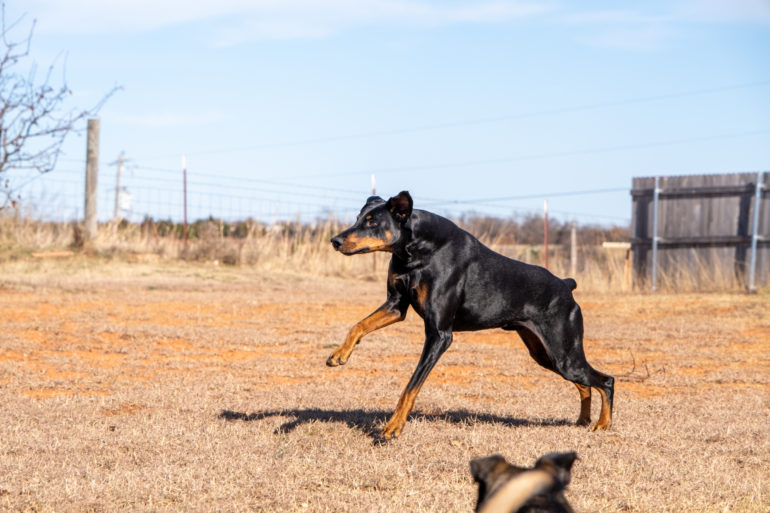







The Fujifilm XS10 struggled to keep my dog in focus as he chased after his ball. My keeper rate from this burst was around 60%. Similar bursts with my other dogs yielded similar results. Other cameras in this price range perform much better. The contrast AF only Olympus EM10 IV performed better than the Fujifilm XS10 when tracking. The Sony a6100 is light years ahead of what the XS10 can do. I’m sure that a firmware update will probably fix this issue. However, just know that I wouldn’t recommend this camera for any action photography at the time of publishing this.
“I’m not a Fujifilm shooter personally. Still, if I was, I am sure I would just keep this camera in JPEG mode all the time. You can shoot away without having to worry about editing later. That’s incredibly liberating, and it’s a major selling point.”
Brett Day – Gear Editor
Fujifilm XS10 – Image Quality
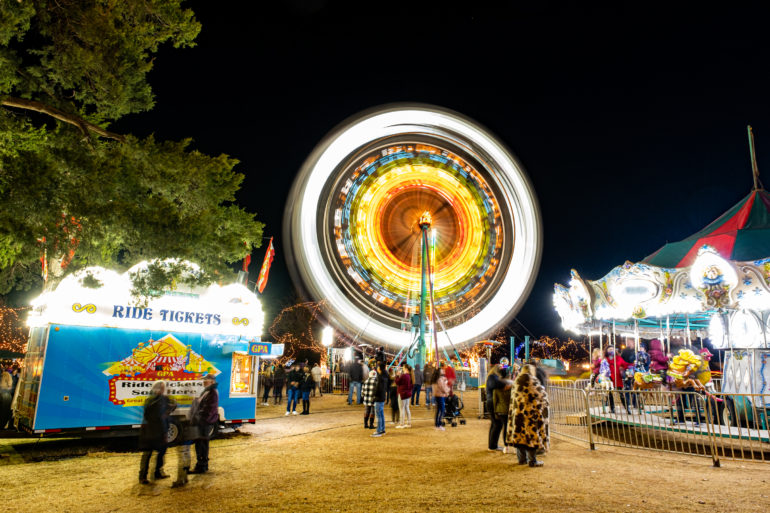
During our initial hands-on with the XS10, Fujifilm would only allow us to capture images in JPEG format. That was a-okay with us because the JPEG quality was excellent. We’re pleased to say that this is still the case. The colors captured and rendered are glorious. Use the film sims and camera filters, and you’ll be overjoyed with the results. We’re also thrilled that the RAW files pack a ton of detail too. You can expect the same image quality from the XS10 that you’ll get from its big brother, the X-T4. Let’s break things down further below.
Raw File Versatility

RAW files from the Fujifilm XS10 are a delight to work with. Over or underexpose, you’ll find that you have ample legroom to push and pull the highlights. We overexposed the image above so we could see what highlight recovery looked like.

Here’s the same image after being processed. As you can see, we were able to bring back a ton of detail in the sky. The XS10 an impressive performer when it comes to dynamic range.

Here we underexposed an image so we could see just what we could pull out of the shadows.

Well, the image speaks for itself really doesn’t it. The amount of detail we pulled out of the tree trunk and branches is really great. The Fujifilm XS10 has not disappointed us in the slightest when it comes to its RAW files.
If you’re looking for cool presets to use with the Fujifilm XS10, consider those from PhotoWhoa.
JPEG Quality

Fujifilm cameras have always been able to produce JPEGS that will put smiles on the faces of photographers. No matter what film simulation or camera filters you use, you’ll be delighted with the results. Noise is controlled very well, and image sharpness is great. The colors. Oh, the colors! Gorgeous. That’s all there is to say about them. I’m not a Fujifilm shooter personally. Still, if I was, I am sure I would just keep this camera in JPEG mode all the time. You can shoot away without having to worry about editing later. That’s incredibly liberating, and it’s a major selling point.
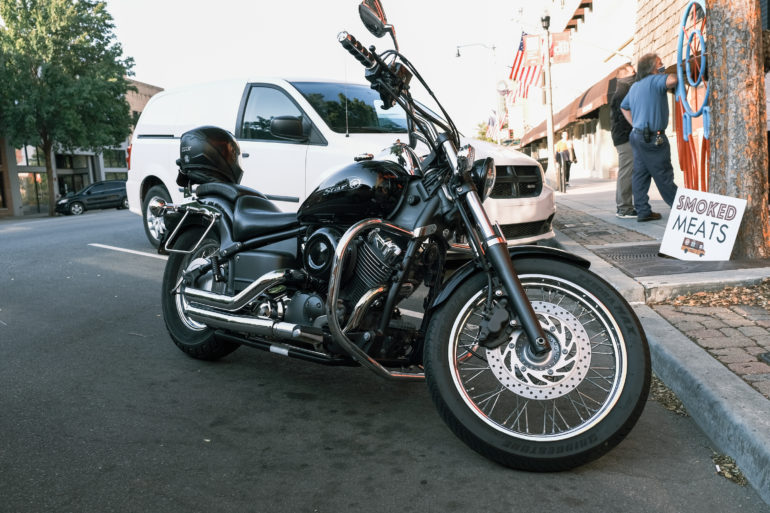



High ISO Quality

The Fujifilm XS10 is no slouch when it comes to high ISO performance. Fujifilm’s X-Trans sensors and image processors do a fantastic job keeping noise well controlled up to 6400. Beyond that, the images do start to fall apart. When you shoot at 12,800 (the most I would push this camera to), you get quite a bit of color noise. However, I printed the above ISO 6400 image on 17×22 paper with the Epson SureColor P900, and the amount of detail in print was staggering. If you need to shoot in low light conditions, have no fears.





Extra Image Samples


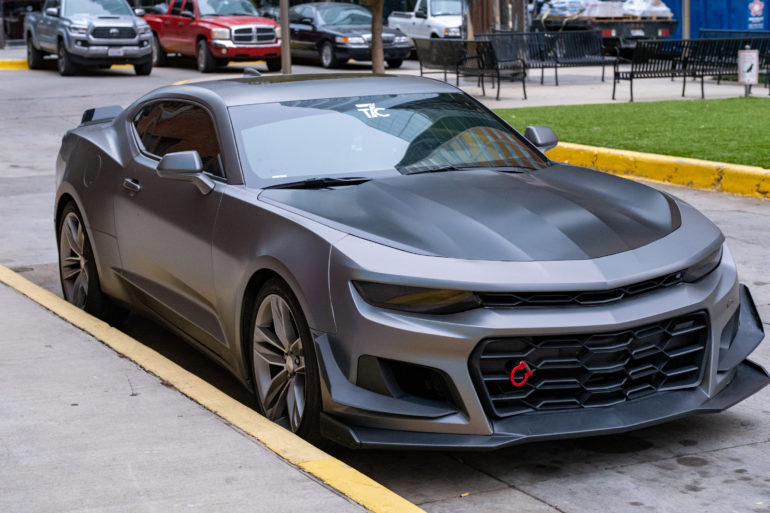




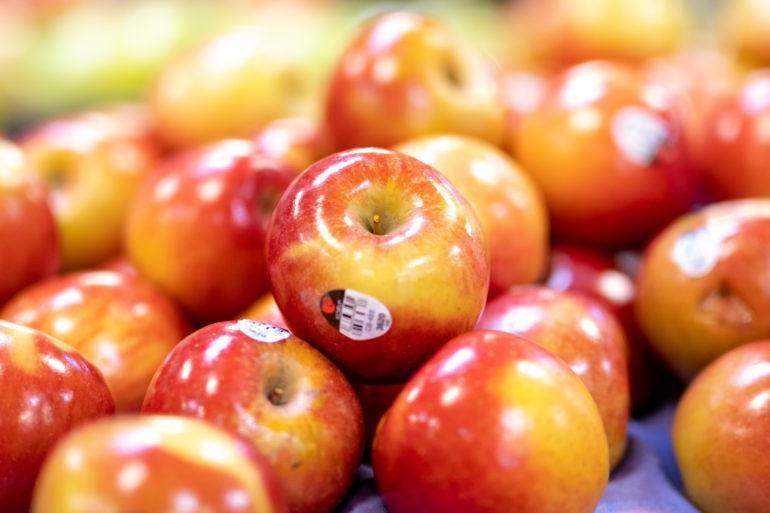



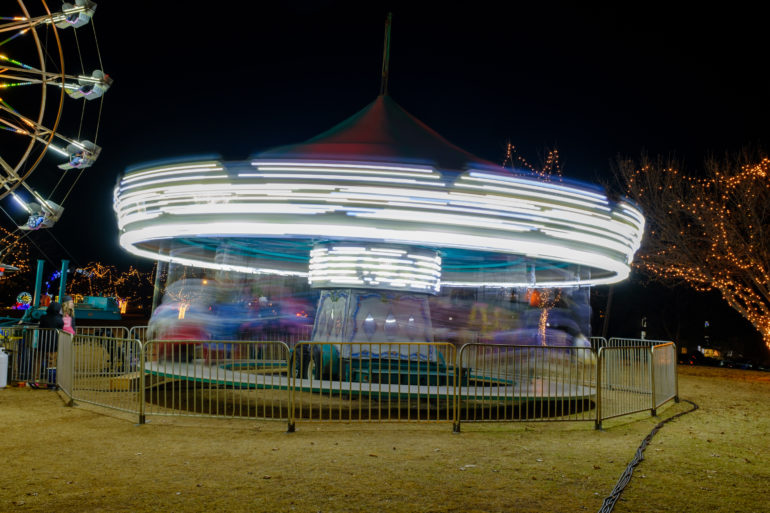





“The Fujifilm XS10 is an entry-level camera with more bells and whistles, like IBIS than the competition. The XS10 is certainly a compelling option because of the great image quality, fantastic handling, and price.”
Brett Day – Gear Editor
Fujifilm XS10 – Conclusions
Likes
- Great ergonomics, like, really great
- Excellent image quality
- Effective IBIS
Dislikes
- Subpar autofocus performance when it comes to tracking
- It’s really time for a new battery
- Not even a hint of weather sealing
The Fujifilm XS10 a great camera overall. Who’s is it for, though? The Fujifilm XS10 is the Fujifilm camera for the masses. It’s for those who are thinking about stepping up from their smartphone. It’s for enthusiasts who want a camera that’s easy to use. This camera is for photographers who were put off with Fujifilm’s usual vintage-style controls and dials. The Fujifilm XS10 is an entry-level camera with more bells and whistles, like IBIS than the competition. The XS10 is certainly a compelling option because of the great image quality, fantastic handling, and price.
However, there are a few problems. The autofocus system is disappointing when it comes to tracking. Battery life really could also have been better. The other weakness of this camera is its lack of weather sealing. Yes, I know they need to differentiate the X-S10 from the X-T4, but they could have just used a little less sealing. However, if you don’t shoot a lot of action, don’t mind carrying spare batteries, and hate shooting in the rain, these problems will not be an issue.

The Fujifilm XS10 scores a very impressive four stars out of five. If you can overlook the two problems mentioned above, you’ll love the Fujifilm XS10. It’s easy and fun to use. The images it produces are excellent. The RAWS and JPEGS are fantastic, and the IBIS and film sims make it a joy to use. Check out Amazon for the latest prices.


